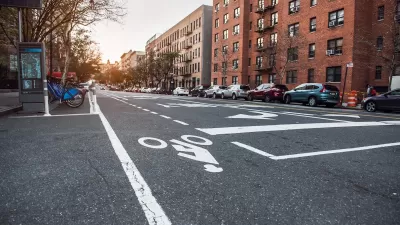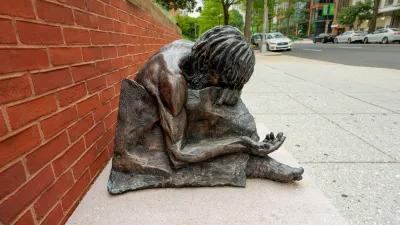Charles Marohn believes that the way the US manages its infrastructure spending is problematic He finds that the lack of federal support for maintenance leads states to irrationally prioritize new projects over repairing old.
Put simply, maintenance is a local issue. Marohn cites the example of his home state of Minnesota, which has more than 1000 deficient bridges in need of significant rehabilitation or replacement. Federal infrastructure money only comes in large quantities for new construction. If Minnesota passes up on the chance to build a new bridge for $670 (while maintaining all 1,149 deficient bridges would cost $500) that money would simply go to another state.
Therefore, politicians, for whom new construction projects aid re-election campaigns, are incentivized to seek new projects at the expense of future generations who will have to foot the repair bills.
FULL STORY: Dig, Baby, Dig

Planetizen Federal Action Tracker
A weekly monitor of how Trump’s orders and actions are impacting planners and planning in America.

Trump Administration Could Effectively End Housing Voucher Program
Federal officials are eyeing major cuts to the Section 8 program that helps millions of low-income households pay rent.

The 120 Year Old Tiny Home Villages That Sheltered San Francisco’s Earthquake Refugees
More than a century ago, San Francisco mobilized to house thousands of residents displaced by the 1906 earthquake. Could their strategy offer a model for the present?

Washington State Legislature Passes Parking Reform Bill
A bill that would limit parking requirements for new developments is headed to the governor’s desk.

Missouri Law Would Ban Protections for Housing Voucher Users
A state law seeks to overturn source-of-income discrimination bans passed by several Missouri cities.

Op-Ed: Looking for Efficiency? Fund Intercity Buses
Much less expensive than rail, intercity buses serve millions of Americans every year, but public subsidies are lacking.
Urban Design for Planners 1: Software Tools
This six-course series explores essential urban design concepts using open source software and equips planners with the tools they need to participate fully in the urban design process.
Planning for Universal Design
Learn the tools for implementing Universal Design in planning regulations.
Ada County Highway District
Clanton & Associates, Inc.
Jessamine County Fiscal Court
Institute for Housing and Urban Development Studies (IHS)
City of Grandview
Harvard GSD Executive Education
Toledo-Lucas County Plan Commissions
Salt Lake City
NYU Wagner Graduate School of Public Service





























